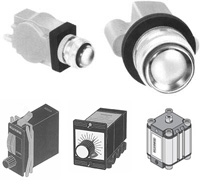Basic Principles of Pneumatic Controls
Pneumatic Controls
It is common for a pneumatic control system to be designed in the form of a pneumatic circuit. The circuits are formed using various components, such as pneumatic cylinders and pneumatic valves. When it comes down to it, pneumatic circuits have two simple functions.
- To use one pneumatic valve to control another valve.
- To control the rate of injection and to release the compressed air in cylinders.
To best meet these needs in individualized systems, it requires a pneumatic circuit diagram that uses pneumatic symbols as a tool to describe the design. When creating this diagram, some basic rules must be followed. Adhering to these five primary rules will ensure that systems run optimally.
- The diagram represents circuits in static forms that assume there is no supply pressure. The placement of components within the circuit must follow this assumption.
- The directional control valve symbol is formed by one or more squares. Inlets and exhausts should be added underneath the square. Outlets should be drawn on top of this. All functions of a valve should be represented by a square. Arrange squares horizontally when two or more functions are required.
- Arrows represent the flow of direction of air currents. When external ports are not connected to internal parts, a capital T symbol should be used.
- Outside each square, symbols of operation components should be added.
- Draw a pneumatic operation signal pressure line on a single side of the squares. Triangles should be used to indicated directions of airflow
Related Reading:
- Basic Principles of Pneumatic Control Systems
Modular control components: the brain of the control system is distributed throughout the system using many pneumatic building blocks, such as thermostats and pneumatic valves. With pneumatic controls, almost any control strategy is possible.
- Simple Steps for Enhancing the Performance of Pneumatic Control Systems
- Pneumatic System Limitations


- Ellis/Kuhnke Controls
132 Lewis Street Unit A-2, Eatontown, N.J. 07724
Phone: 1-800-221-0714
Fax: 732-291-8154
Email: Info@ekci.com
- Home Pneumatic Controls Technical Info CAD Drawings Contact Us Pneumatic Timers Blog Site Map
If you are looking for Pneumatic Controls, Pneumatic Valves then look no further than Ellis/Kuhnke Controls.
